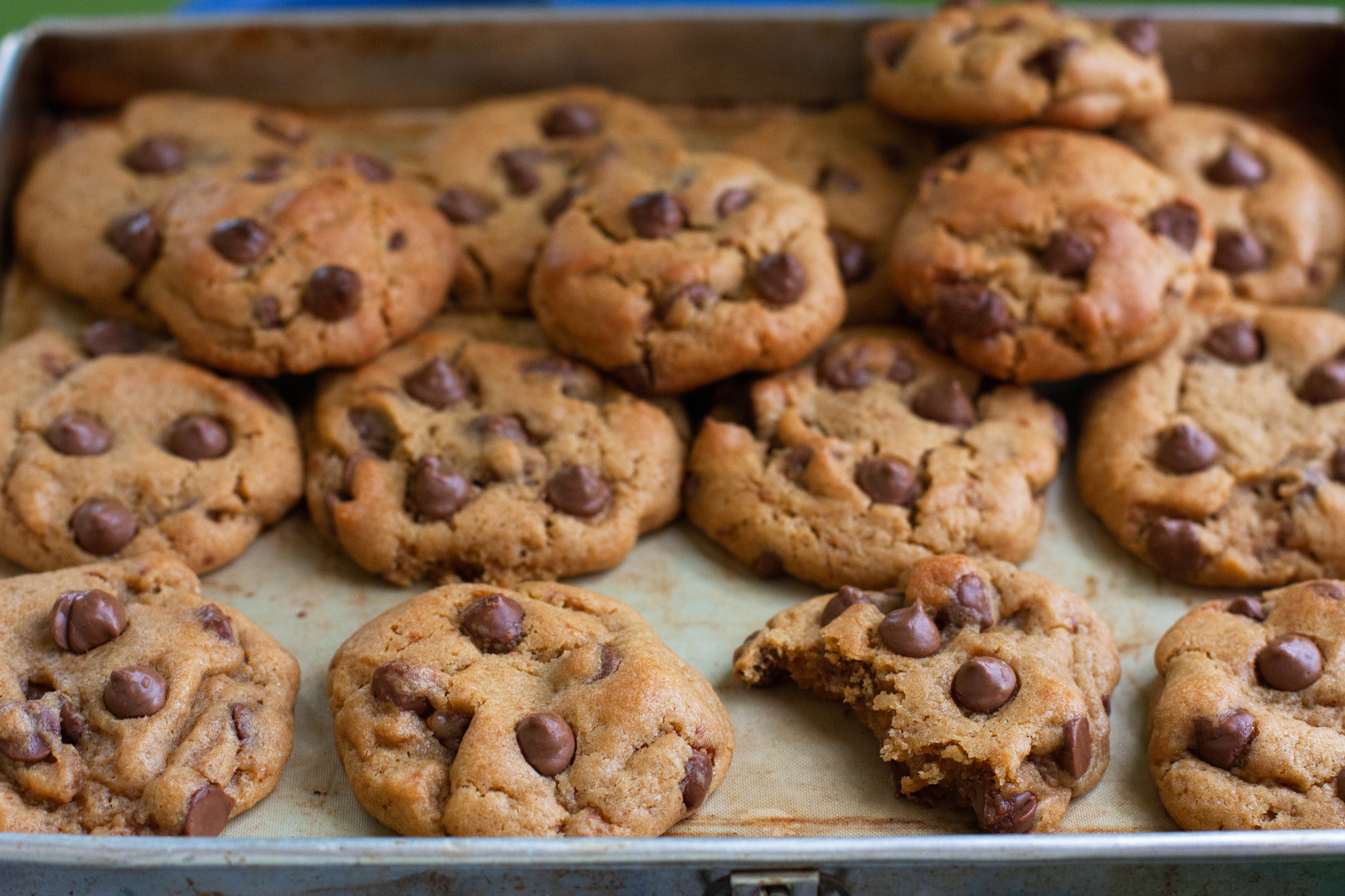This information is for inspirational purposes only. To learn more about Frost Artisan Bakery’s current menu and custom baked goods, please contact us.
America’s favorite dessert comes in many sizes, shapes, and flavors. From chocolate chips to oatmeal, crescents to sandwiches, cookies are a favorite treat among adults and children. Their perfection is in their simplicity: It’s hard to beat a great-tasting cookie, especially one with the perfect texture. Learning how to make soft cookies takes just a little effort and technique to achieve expert results.
Reduce the Baking Time Slightly
Knowing how to make soft, chewy cookies requires careful monitoring of the baking time. If you prefer soft cookies, you can try slightly underbaking them. Place a few cookies from your batch on a baking sheet lined with parchment paper or a nonstick baking mat. Reduce the baking time in your recipe by two to three minutes for your test batch and check them for the desired texture. Soft cookies should be golden around the edges but can remain pale in the center.
Adjust the Oven Temperature
In general, most cookie recipes will tell you the temperature to bake cookies is 350° F. This temperature allows the outside of the cookie to bake at the same rate as the inside of the cookie. Reducing the temperature to 325° F will yield a slightly chewier cookie due to the slower baking time.
Read your recipe carefully before baking to confirm how long to bake cookies. If you plan to bake your cookies at 325° F versus 350° F, you may need to increase the baking time by a few minutes to achieve the soft texture you desire but still achieve doneness.
Melt Butter for the Batter
Another method for how to make the perfect cookie that’s soft and chewy is melting butter before combining it with other ingredients. Often, cookie recipes call for creaming butter and sugar together before adding eggs, dry ingredients, and flavorings. Melting the butter creates a cookie with a chewy texture. To keep the cookies from becoming tough, add an egg yolk or two to the batter to tenderize the cookie and prevent it from hardening after baking.
Incorporate Brown Sugar
Unlike white sugar, brown sugar contains molasses extracted from sugar cane, which gives the sugar its signature brown color. In many cases, substituting brown sugar for some or all of the granulated sugar in a recipe will also produce softer cookies, since the brown sugar contains more moisture. The molasses in the brown sugar will yield a softer, supremely moist cookie.
How to Tell When Cookies Are Done
Knowing how to tell when cookies are done is essential to getting the texture you want. Follow these tips for the perfect cookies:
- Read your recipe carefully to determine how long you should bake them.
- Check your oven temperature with an oven thermometer for the most accurate results. If your oven is even slightly off, it will affect the baking time of your cookies.
- Look for an even color on the cookies’ surface. Underbaked cookies will have a glossy appearance compared to thoroughly baked cookies.
- Check for the slight cracks or light golden color around the edges that signal doneness.
- After baking, move the cookies to a cooling rack to cool completely. It’s important to allow the cookies to cool off of the baking sheet, as the heat from the pan will continue to bake them even after they’re out of the oven.
Treat Your Sweet Tooth to Cookies from Frost Artisan Bakery
At Frost, we love creating cookies for special occasions. Place your custom order for our cutout cookies that you can share with friends and family for birthdays, holidays, and special events.


